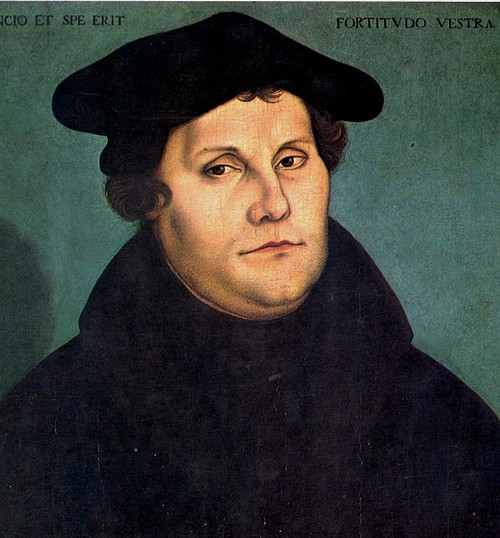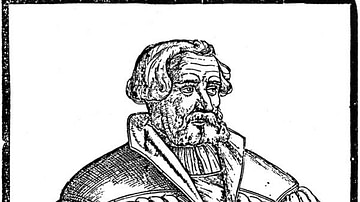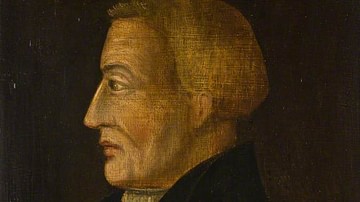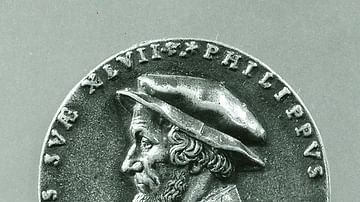Antisemitism is a modern term that describes prejudice and hostility to Jews and Judaism. The origins of Christian antisemitism in the gospels are based on the story of a 1st-century itinerant Jewish preacher, Jesus of Nazareth, in the Roman province of Judea.
The gospels explained the trial and crucifixion of Jesus of Nazareth and claimed that he died because of religious differences with the Jewish leadership, and not as a traitor to the Roman Empire. Early Christians claimed that Jesus Christ and his followers were persecuted by Jews, which was the justification for the persecution and murder of Jews by Christians in the Middle Ages and beyond. Racial and behavioral theory became an added element in the early modern era.
Early Christianity
When the first Christian missionaries took the teachings of Jesus Christ to the cities of the Eastern Roman Empire, more Gentiles (non-Jews, pagans) wanted to join than Jews. Debates arose as to whether these new believers (Gentile Christians) had to fully convert to the ritual requirements of Jewish identity, such as circumcision and Jewish dietary laws. Some of the Jewish Christians continued to insist on their conversion. In Paul's letters and the Acts of the Apostles, we have extensive apologia, explanations of why Gentile Christians did not have to become Jews first. Many of the arguments compared the new movement against Judaism, introducing innovations such as 'faith', and the sacrificial atonement of Jesus' death. These writings set the parameters for the separation of Christianity from Judaism.
In the 2nd century, continuing resistance to the new movement by Jews led Christian bishops to create adversos literature ("writings against the Jews as adversaries"). Utilizing the polemic of the gospels and the letters of Paul the Apostle, they claimed that just as the Jews 'persecuted' Jesus and his disciples, they continued to persecute Christians in their contemporary culture. These treatises, however, provided no contemporary evidence for the specific ways in which Jews 'persecuted Christians' in cities in everyday life outside of debate. Beginning in Late Antiquity to the Middle Ages and beyond, these writings continued to be used as rationalization for the persecution and murder of Jews.
Jewish-Christian Relations in Late Antiquity
In the wake of Constantine’s conversion to Christianity, he granted Christians the legal right to assemble throughout the Roman Empire with the Edict of Milan in 313. The empire did not become Christian overnight, but he promoted Christians with tax breaks and funds for the building of churches. At the First Council of Nicaea in 325, a "creed" was created for what all Christians should believe and practice throughout the Roman Empire that was enforced by the state.
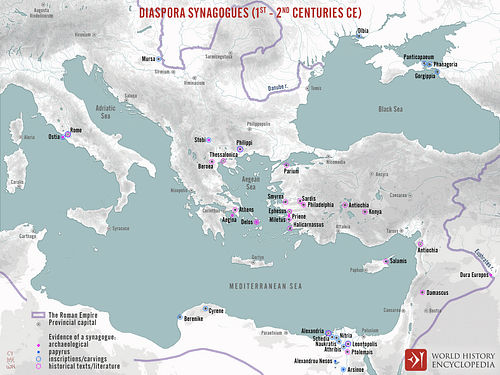
The Roman emperor Theodosius I (r. 379-395) is remembered as a great champion of orthodoxy. Theodosius I made Christianity the only legal religion of the Empire in 381. This was the official end of native cults in the ancient world and the creation of the Catholic Church. In 396, Theodosius banned the Olympic Games, dedicated to the gods, and all native temples and shrines were ordered destroyed or turned into churches. This is when Christians invented the term, pagianoi ("pagans") a negative slur against those who had not yet converted.
Theodosius I's edict said nothing about the Jews. However, he addressed them when he updated and codified the original Roman law, the Twelve Tables, finished by the Byzantine emperor Justinian I in 597. Jews were permitted to continue in their synagogues but with diminishing social interaction and economic opportunities:
- Proselytizing by Jews was punished by burning at the stake. Jews were forbidden to attack or harass any Jew who became a Christian.
- Jews could not own Christian slaves, and circumcision of any slaves was forbidden. Jews who circumcised slaves had to free them. This essentially destroyed any competition with Christian enterprises that still relied upon slave labor.
- If a Christian converted to Judaism, his property was seized for the treasury. However, it was prohibited to destroy or attack a synagogue. Their property was protected as their communities contributed taxes to the state.
- Intermarriage between Jews and Christians was prohibited. This was now considered the crime of adultery.
- Jews could no longer have their own religious courts but had to bring any actions to the Roman law courts.
- Synagogues were forbidden to use Hebrew, as a precaution against conspiracies against the Empire.
- No Jews could work as lawyers or doctors, where intimate details of a person's life could be used against them. Jews, pagans, and heretics were forbidden to publicly debate Christian doctrines.
- Sects of Jewish Christians had been banned as heretics in 325 and remained so.
John Chrysostom ("Golden-tongue", 347-407), the bishop of Antioch, was famed for his preaching. During Easter week in 387, he was apparently upset over the fact that his Christians attended synagogue on Saturday and church on Sunday. In a series of sermons, he denounced synagogues as brothels, and stated that their sexual immorality has the sound of snorting, rutting pig. While clearly anti-Jewish, this also reveals something very interesting about Late Antiquity: ignoring the writings of the bishops against the Jews, common Christians in Antioch apparently had no problem mixing with the Jews, sharing their holidays and festive meals. We find this in several communities throughout the empire. Unfortunately, John's Easter sermons were preserved and quoted against the Jews in medieval Europe.

The late Roman Empire experienced various invasions by Goths, Visigoths, Vandals, and Huns. Many of these tribes had converted to Christianity but were deemed heretics, as they continued to follow the Arian concept of the Trinity. Depending upon the views of different Roman emperors, legislation against Jews was sometimes enforced or sometimes ignored.
When the bones of Saint Stephen were discovered in Jerusalem in 415, this began the distribution of relics to various cities. When they arrived on the island of Minorca, the Christian community burned the synagogue. This action included the first documented forced baptism of Jews.
Jews in Medieval Europe
With the establishment of the Papacy under Leo I (l. 400-461) and the new Holy Roman Empire under Charlemagne (l. 748-814), the Catholic Church dominated both government and daily life throughout Europe. Jewish-Christian relations in these centuries varied, depending upon the current Pope and Holy Roman Emperor.
Pope Urban II (r. 1088-1099) called for the first of what would become the Christian Crusades against the Muslims in the Holy Land to recover Christian holy sites. Christians were offered absolution from sin if they took up this cause. It took several months to sail or travel overland and many did not reach the goal. However, 'fighting in the cause of Christ,' could be achieved by attacking and killing local Jews. Jews were massacred in Worms, Trier, and Metz. More Jews died in the Rhineland than Muslims in the Holy Land.
In 1215, the Fourth Lateran Council declared that
- Jews (and Saracens) should be distinguished from Christians in their dress
- Jews are not to hold public offices
- converts to the faith among the Jews may not retain their old rite.
There were variations of the charge of "blood libel" against Jews, that Jews required the blood of Christian children for their rituals. Crises such as the Black Death bubonic plague (1346-1353), led to periodic massacres of Jews in various cities.
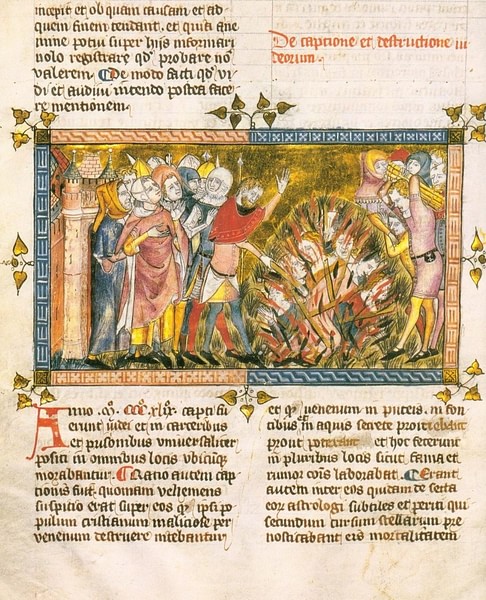
The Episcopal Inquisition was instituted by Pope Gregory IX in 1231, originally to combat new versions of Gnostic heresy in Southern France (the Cathars) and the Waldenses in the Balkans. At the urging of Ferdinand II of Aragon (r. 1479-1516) and Isabella I of Castile (r. 1474-1504), the Inquisition developed a special relationship with the crown in Spain. Their Inquisitor, Tomás de Torquemada, was charged with ridding Spain of the Moors and Jews as North Africa and parts of Spain had been under the influence of Islam for centuries. He also extended the ban to the Marranos (converts from Judaism), and Moriscos (converts from Islam) who had been Christians for generations. Torquemada accused them of secretly continuing to practice their original faith. Jews and Muslims were expelled from Spain in October 1492.
This is when behavioral theory and racial theory were added to the persecution of Jews and Muslims. As their concepts and behavior were understood as being in their blood, their conversion would always be suspect. This idea spread throughout Europe and became embedded in emerging racial theories as Europeans encountered indigenous populations through trade. Venice was the first city to officially confine Jews to their own physical community, the ghetto, in 1516. Pope Paul IV (1476-1559) created the Jewish ghetto in Rome and published the doctrine extra ecclesiam nulla salus ("there is no salvation outside the Church").
The Middle Ages also saw the development of iconography in art for pamphlets, manuscripts, and church iconography for what became the stereotypical image of the Jew: a straggly beard, a hooked nose, a bag of coins, and gaudy apparel. Originally Christians had cited Deuteronomy 23:19 for usury as a sin: "Do not charge a fellow Israelite interest, whether on money or food or anything else that may earn interest." With diminishing economic opportunities for Jews, they were nevertheless permitted to charge interest on loans. This was related to the Temple incident described in the gospels where Jesus overturned the table of the money-changers. As money-changers, the claim was made that contemporary (medieval) Jews were still "oppressing" the people with their sins. Jews were portrayed as being motivated by the Devil, and many Renaissance paintings depicted the moment when Judas betrayed Jesus with a kiss. The performance of Christian 'passion plays' drawn from the Easter liturgy also popularized retaliation against the Jews.
Reformation
From the 14th to the 16th centuries, criticism of the institution of the Catholic Church also began to spread throughout Europe. Early reformers such as John Wycliffe (1330-1384) and Jan Hus (1369-1415) advocated for the production of Bibles in local languages instead of Latin. The invention of the printing press, credited to Johannes Gutenberg c. 1450, helped to spread their ideas through several countries.
Martin Luther (1483-1546) was a German professor of theology, and an Augustinian monk and priest. In 1517, Martin Luther's 95 Theses advocated against the worship of saints, relics, indulgences, and other abuses by the medieval Church. Luther declared that the only true knowledge is found in sola scriptura, ("scripture alone"). Scripture can be mediated through creeds and Councils, however, humans are fallible and we are saved through the divine scriptures and God's gift of grace. As only God can do this, the clergy are not sacred mediators between God and humans. Nor is the Church.
Luther's commentaries, especially on Paul's letters to the Galatians and to the Romans, highlighted Paul's claim that Gentiles were saved not by "works of the Law", but through faith, where he added sola fide ("faith alone"). Paul's "works of the Law" only referred to the physical distinctions between Jewish and Gentile believers, but like many Christian writers before him, Luther took "works of the Law" to be the entirety of Judaism. "Works of the Law" and even good deeds cannot achieve justification or righteousness, which can only be conferred by God through Christ. Luther highlighted Paul's references to Jews and Judaism as his former unenlightened life, now understood as a new dispensation from God. At the same time, Luther's references to Pharisees became analogies of the Catholic Church, where their works, rituals, and sacraments fell into the same misunderstanding of the works and legalism that he claimed Paul abrogated.
When he refused to renounce his criticism he was excommunicated by Pope Leo X and Charles V, Holy Roman Emperor, at the Diet of Worms in 1521. When he married Katharina von Bora (1499-1552), a former nun, he also renounced the idea of clerical celibacy as well as the Catholic meaning of the sacraments.
Luther's ideas were also spread by another reformer, John Calvin (1509-1564), and his community in Geneva, Switzerland. Both upheld Saint Augustine's doctrine of predestination, that God already knows who will be saved and who will be condemned. Augustine of Hippo (354-430) fully condoned all legislation and bans against non-Christians and heretics. However, he argued that Judaism had laid the foundation for the Church and provided the beginnings of understanding God and Christ. Augustine claimed that one of the purposes of the Church was to protect that legacy; it provided Christianity with ancient roots. In other words, Christianity was not new, but the culmination of what the God of Israel had always intended with his covenants.
In Late Antiquity with its constant wars and barbarian invasions, end-time scenarios were drawn from the Book of Revelation. Paul had written that when Christ returned, "his brother Jews" would see the light and convert at that time (Romans 9-11). Augustine wrote, "slay them not;" Jews had to survive to be part of the end-time scenario when they would eventually convert and so serve as validation of God's original divine plan. Perhaps because of Augustine's view, initially, Luther wanted to convert the Jews. He argued against the section "Servitude of the Jews" from the code of Justinian I, he wrote treatises against anti-Jewish legislation in several areas, focusing on conversion as the best method, and in 1523, he produced a tract That Jesus Christ Was Born a Jew:
If the apostles, who also were Jews, had dealt with us Gentiles as we Gentiles deal with the Jews, there would never have been a Christian among the Gentiles ... When we are inclined to boast of our position [as Christians] we should remember that we are but Gentiles, while the Jews are of the lineage of Christ. We are aliens and in-laws; they are blood relatives, cousins, and brothers of our Lord. Therefore, if one is to boast of flesh and blood the Jews are actually nearer to Christ than we are ... If we really want to help them, we must be guided in our dealings with them not by papal law but by the law of Christian love.
Conversion of the Jews would eventually be the work of God alone. In 1536, the Elector of Saxony, John Frederick, Luther's prince, issued an edict against the Jews, which prohibited them from inhabiting, trading, and passing through his district. A rabbi had contacted a friend of Luther's to ask him to intercede with the Elector, but Luther refused because of "Jewish obstinacy" in not converting. He then completely reversed his earlier views with the publication of On the Jews and Their Lies (1543). It remains difficult to understand why. Perhaps because of the exigencies of politics or as a way to make his critique of the Catholic Church more acceptable to local princes.
In On the Jews and Their Lies, he set out new anti-Jewish legislation:
- Set fire to their synagogues and schools, "so that God can see that we are Christians."
- Raze and destroy their houses.
- All their prayer books and Talmudic writings in which such idolatry, lies, cursing, and blasphemy are taught, should be taken from them.
- Rabbis should be forbidden to teach on pain of loss of life and limb.
- Safe conduct on the highways should be abolished completely for the Jews, for they have no business in the countryside.
- Usury should be prohibited to them, and all cash and treasure of silver and gold be taken from them.
- Young, strong Jews should earn their bread in the sweat of their brow.
Like in the writing of the Church Fathers, what is notably absent in this treatise is any details of Jewish life in medieval Germany or any details of ways in which Jews continued to persecute Christians with "the blood of the children they have shed since then [the destruction of Jerusalem] (which still shines forth from their eyes and their skin)" (Sourcebook – On the Jews and Their Lies). The only reference was to when Moses had predicted the curses against the Jews if they failed to obey the new covenant at Sinai (Deuteronomy 28).
Luther's writings on the Jews remain infamous. On the Jews and Their Lies was reprinted in the Nazi newspaper Der Stürmer in 1937 and was used as the rationalization for the burning of synagogues on Kristallnacht in 1938. Modern Lutheran and Protestant churches have vigorously renounced Luther's views on Jews and Judaism.


